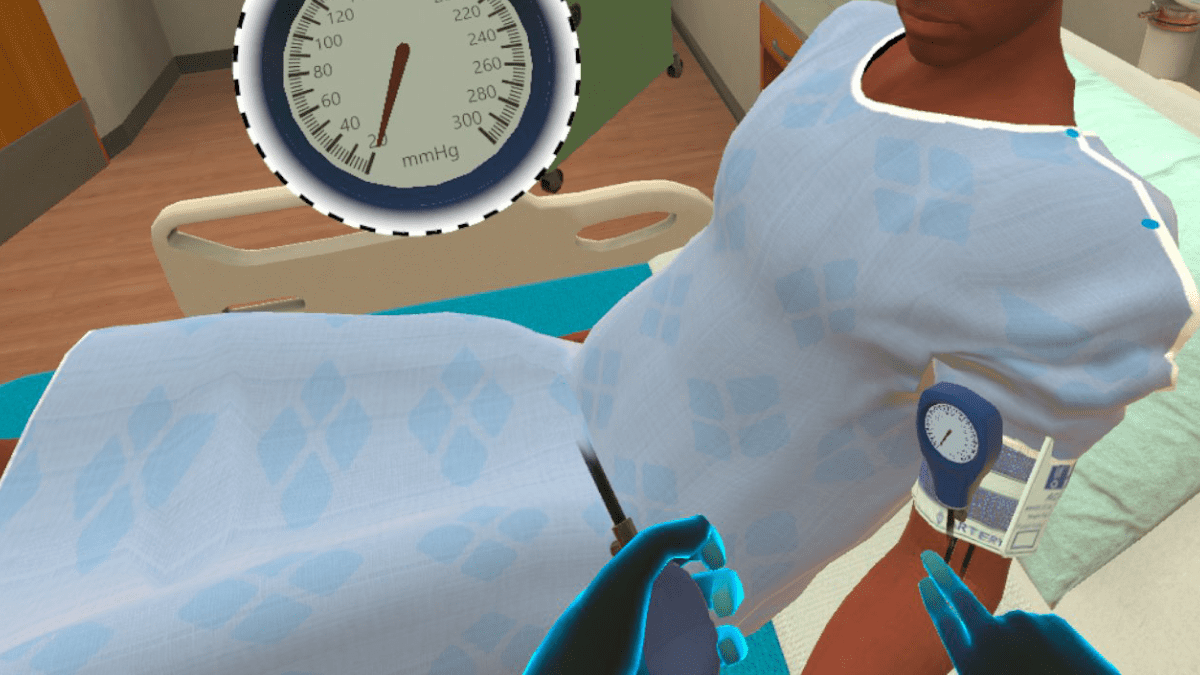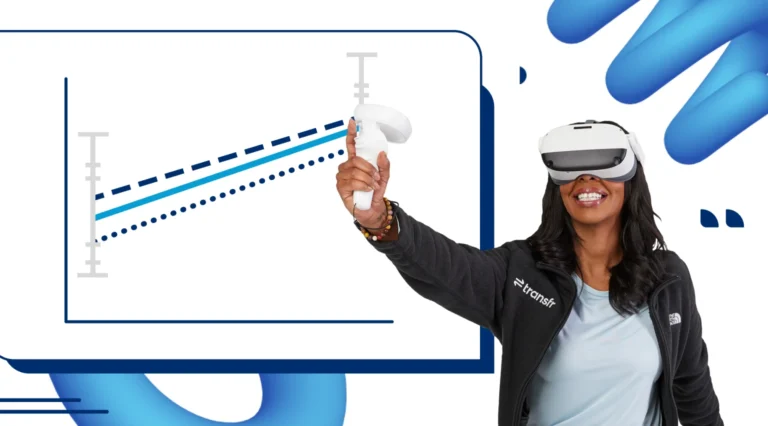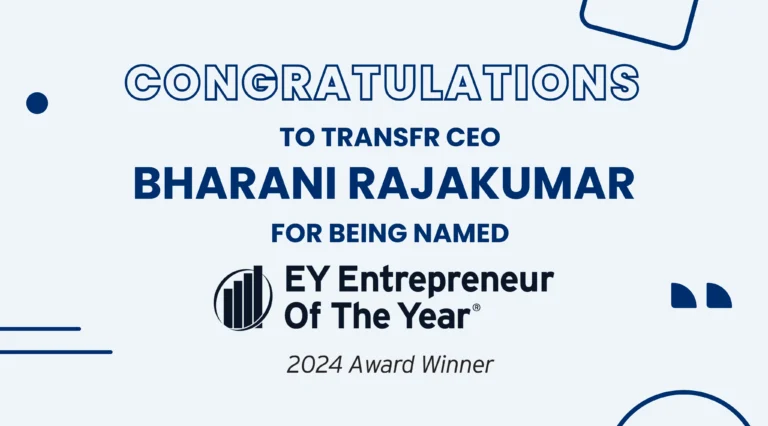Simulation-based education for healthcare professionals requires specialized facilities and equipment, plus experienced staff to run them (often drawn from the ranks of working providers). The American Association of College of Nursing’s (AACN) 2021-2022 report showed that U.S. nursing schools turned away 91,938 qualified nursing program applicants in 2021 due to insufficient numbers of faculty, clinical sites, classroom space, and clinical preceptors (as well as budget constraints). The AACN also found that 150 schools (40% of those surveyed) reported that insufficient availability of clinical sites was the single most important reason for turning away qualified applicants.
These are all issues that our panel convened to discuss on Upward, the Transfr podcast. We were joined by Transfr’s own Lori Hardie, Registered Nurse, Director of Health Sciences, and Syndey Beaumont, Manager of Experience Design, as well as Nursing Director Lori Yates-Hodges, RN, and Registered Nurse Sydney Denstorff, to dig into how VR healthcare training can help schools and hospitals overcome these hurdles and help train more healthcare professionals.
Hear this dynamic panel talk about how to modernize healthcare training here!
Overcoming clinical site and financial limitations with VR healthcare training
Simulations are not new in the world of healthcare education — the difference is that VR makes simulated training more portable and compact and a lot less expensive.
“There’s a lot of expense that comes with building simulation labs,” says Lori Hardie. “I was running one for 10 years. It’s expensive and I think that’s one thing that VR offers in contrast to traditional setups.”
Three major areas where VR presents huge cost savings versus setting up a traditional simulation lab are that there’s no need for a dedicated physical space, buying specialized equipment, or supplying consumable materials. The majority of training repetitions for learners in a variety of disciplines can be completed in VR.
Finding the space necessary for a simulation lab can be a challenge for many schools and hospitals, but VR healthcare training can take place anywhere — any kind of classroom or conference room can be adapted into a temporary VR simulation lab.
“VR healthcare simulations might cost maybe a little bit upfront.” says Lori Yates-Hodges, RN. “But then we don’t have to do the maintenance and the building-out of the lab. I just see VR being way more cost effective than us trying to build our own sim lab.”
Additionally, VR healthcare training doesn’t require specialized tools or equipment. Trainees can also build confidence and competence in VR without the need for copious amounts of consumables (gloves and other PPE, needles, etc.), which cost the program money and end up in landfills.
“You’re not buying mannequins that are tens of thousands if not hundreds of thousands of dollars,” Lori Hardie explains, driving home the cost-savings of VR. “Or maintaining those and the actual brick and mortar spaces.”
VR healthcare simulations — enhancing instructor capacity
There will never be a technological replacement for a trained, capable, compassionate human healthcare professional. There are situations where VR is uniquely well-suited to augmenting the capabilities of human instructors, allowing them to positively impact more students in the same amount of time and space.
Finding skilled, experienced healthcare professionals to serve as instructors and clinical proctors in training settings is a complex problem. Professionals are retiring and the ones left in the system are needed bedside, carrying on as best they can as their ranks are successively thinned by an inability to train replacements.
This leaves healthcare educators sorely squeezed. VR healthcare training offers them a tool to enhance their reach. Contrast this to the challenges that new-graduate RN, Sydney, encountered while in clinical rotations:
“Usually we were not well-staffed enough to have the preceptor who was training me either by my side or available for questions at all times. On numerous occasions I had to step away from a patient because I had a question and my preceptor had gone off to help another patient.”
VR healthcare training allows students to safely practice skills in a risk-free environment.. A virtual coach provides personalized, real-time feedback as students practice techniques, ensuring that they perform each step properly, even without direct, in-person, supervision. Task completion statistics are provided, allowing instructors to further evaluate learner performance and take steps to provide students what they need to succeed.
The future is bright for healthcare providers
The healthcare industry is facing countless challenges, but there is hope. The increased implementation of VR healthcare training can help close the identified gaps to train and onboard new healthcare workers. It also extends the abilities of hard-working instructors to serve more students or even existing professionals who are practicing, upskilling, or reskilling.
Healthcare is a rewarding profession that renders an essential service, often bringing a great deal of fulfillment to the professionals who serve in these roles, as Lori Yates-Hodges recounts:
“Nursing is really attractive in a lot of ways. We have flexible hours, it’s different from the nine-to-five grind… You can work anywhere in the world. You can teach. You can work in clinics. You can do surgery. You can deliver babies. There’s so much to this industry and unfortunately we have focused on the negative especially through the pandemic and the national shortage but we have so much to offer. It’s exciting; we get to save lives.”
Hear our amazing panel in their own words
on this episode of Upward, the Transfer Podcast.





